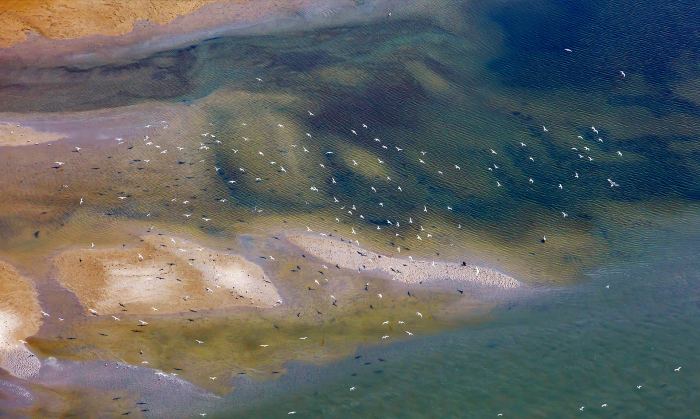The news worldwide is often full of pretty alarming stories about the impact of global warming. Ice melting, sea levels rising, coastal communities being hit by severe flooding following hurricanes, droughts wiping out crops… As certain Boskalis projects have a direct link to mitigating the impact of climate change we asked two experts why these extreme events are occurring and what they think should be done to protect ourselves against them.
The Royal Netherlands Meteorological Institute (KNMI) Director General, Professor Gerard van der Steenhoven, and Stefan Aarninkhof, Professor of Hydraulic Engineering and Coastal Engineering at Delft University of Technology, talk candidly about the realities. Surprisingly, despite the fairly worrisome climate developments, they are still positive that humankind has the innovative spirit needed to come up with solutions.
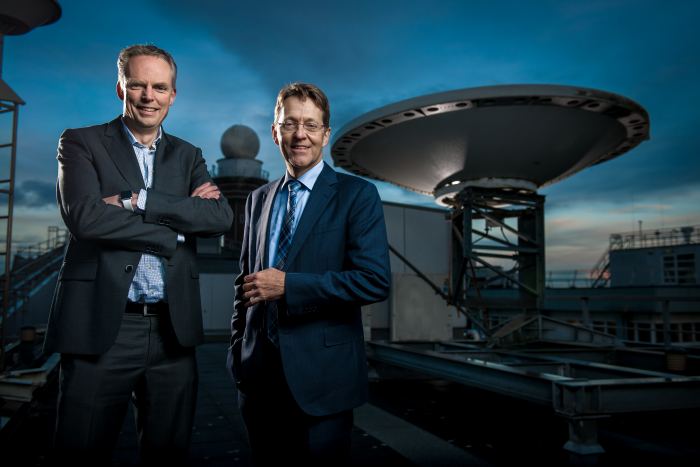
Professors Stefan Aarninkhof [left] and Gerard van der Steenhoven
Melting ice caps are an important indicator of global warming. Can you explain what causes this and the impact it has on the weather?
Gerard: “Global warming is happening now! Satellite images looking at the ice cap on the North Pole have shown a systematic trend for 20 years. When measuring the ice cover in September, when it is at its smallest, the ice has decreased by 30%. In the worst case in 2012 it was even 50% less than what it was 30 years ago. This is having a massive impact. We are talking about huge amounts of ice. The expectations are that in the summer you will be able to travel over the North Pole from Europe to Asia soon. This is realistic, and pretty depressing in the sense that it means a rise in temperature and in the amount of heat energy, which has serious meteorological effects that cannot be denied anymore. Another example — but not related to the previous one — is of course that sea levels have already risen by 20 centimeters since the pre-industrial time. This process, which is caused by the expansion of the heated seawater, will continue at increased speed in the coming decades. Both the melting of the North Pole and the increased sea levels are indisputable facts.”
Given that the ice is melting and the sea is warming, the sea level rise will be close to 100 centimeters by the end of the 21st century.
Antarctica
“But if you talk about the macroscopic picture, and stand back, you should also consider the impact of global warming on the Antarctic, the South Pole. If you would only consider the surface area of the South Pole ice cover then there is not a lot happening apparently. There are, however, key differences between the North and South Pole. In the North, the ice is afloat in the water so when it melts it does not affect the sea level. However, in contrast, in the South Pole the ice cover is lying on top of an elevated land mass with an altitude of 1,000 to 1,500 meters. So the impact of global warming is different. The melting ice on the South Pole is gradually sliding into the ocean, which is much more worrying because these massive amounts of water were not previously there — and this will lead to a substantial sealevel rise in addition to the effect described previously.”
“And just recently, a year ago, we identified a new phenomenon. There is much more precipitation — more snow and rain at the Poles — due to climate change. Crevices then get filled with snow and rain, expand more, and the cracks grow, meaning that the ice is breaking faster than previously assumed. Hopefully, my scientists are wrong. We are awaiting confirmation from other teams to confirm or reject that explanation. As a scientist I hope my team is right but as a citizen I hope they are wrong. If they are right the sea level rise by the end of the century could be substantially greater.”
Rising sea levels
What is the impact of the melting ice caps on the rising sea levels?
Gerard: “Given that the ice is melting and the sea is warming, the sea level rise will be close to 100 centimeters by the end of the 21st century. This is one of the most important consequences of the greenhouse effect. Also with the time scale of centuries, the biggest threat we face is this sea level rise due to the continuous melting of ice shelves on top of land masses such as Antarctica and Greenland. If we do not reduce global warming the consequences will be enormous. And given that many of the mega cities are located on the shore, a sea level rise of just one meter is already very problematic.”
Stefan: “And what makes this extra interesting — imagine the time scales involved? A sea level rise of one meter is likely by 2100, but experts foresee an ongoing and probably accelerated rise in the years thereafter. For the Netherlands we can certainly develop engineering measures to ensure safe living in our cities in the case of a one-meter rise of the sea level. But what if the more extreme scenarios would become reality in 200 or 300 years from now? Can we still safely live and work in our low-lying delta, or should we move to higher grounds? The time is there to start thinking in terms of climate resilient scenarios and the associated adaptation measures needed.”
Gerard: “Yes, but there is a little comfort there. The energy needed to melt all of Antarctica and Greenland is such that even given the most pessimistic scenario for global warming — when we don’t stop using fossil fuels — it will still take many centuries before all of it is melted, possibly until 2800. Unfortunately, by that time Denmark and the Netherlands will have disappeared underwater unless precautionary measures are taken. The even greater problem however is in third world cities with populations of 20-50 million people living in coastal areas. Think of the many coastal cities in Bangladesh, Indonesia and Africa. The drama will really happen there. By 2065 we could be faced with 200 million climate refugees!”
Is the world likely to face more extreme weather events?
Gerard: “Yes certainly. There is only one conclusion, we should stop emitting greenhouse gases. However, even if we stop emitting them right now, they will stay in the atmosphere for 100 years still causing these extreme weather events, droughts, hurricanes, storms etc. We have no choice, we will be confronted more often with such extreme weather events with a probability that has been estimated to be two to three times more than we have them now.”
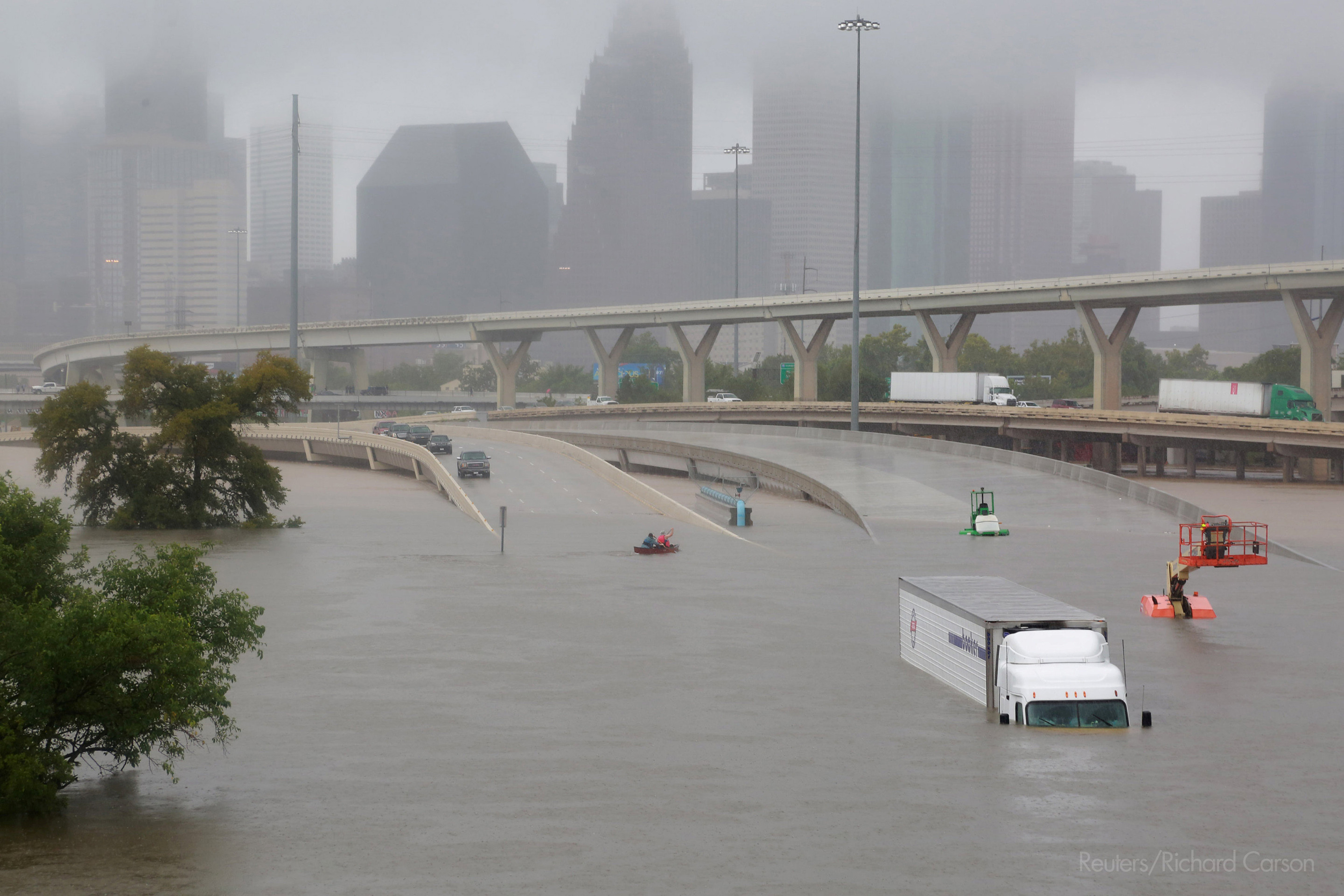
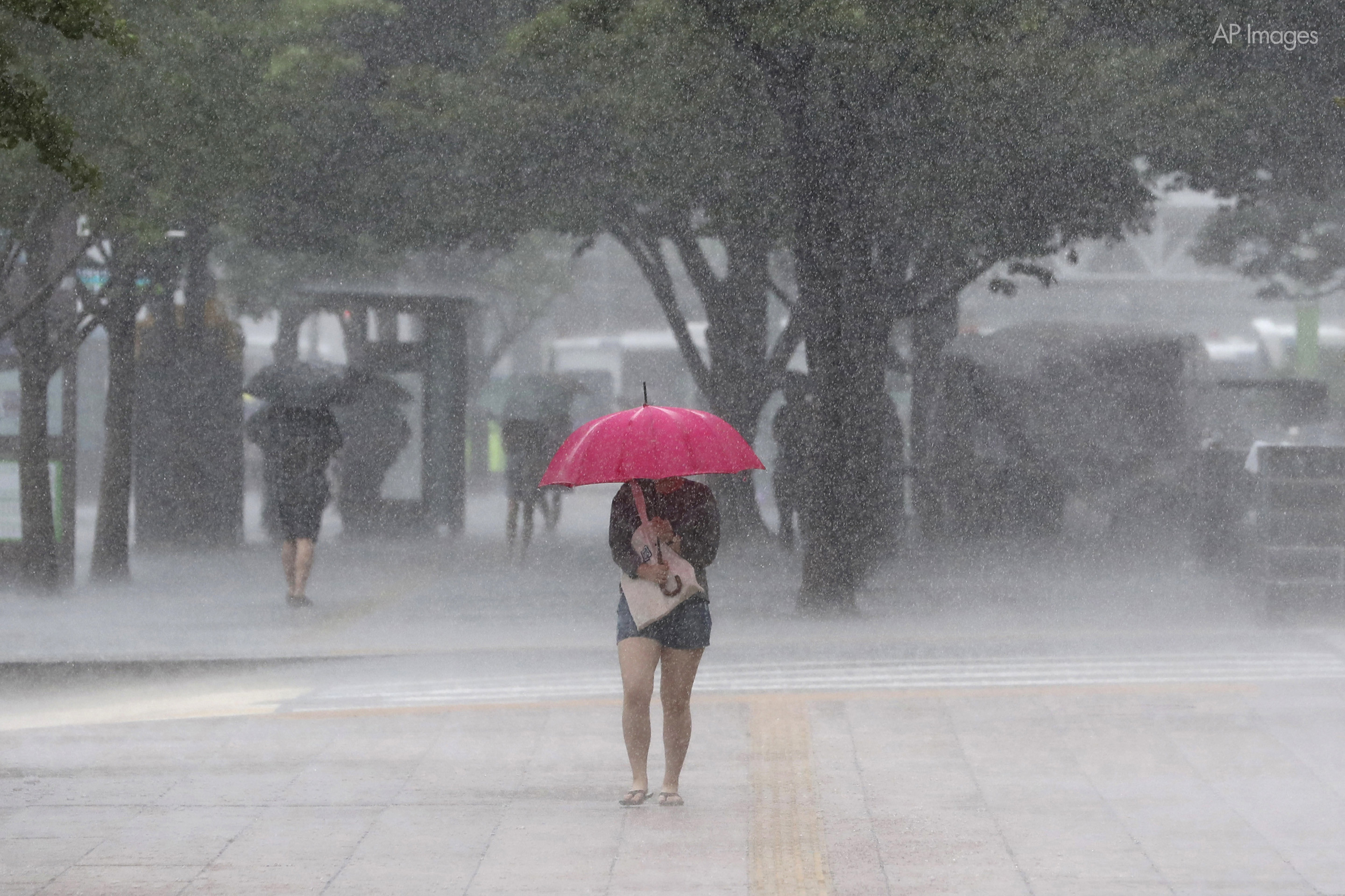
Stefan: “It is also the sheer scale of these events. For example, Hurricane Harvey led to more than a meter of rainfall in just two days in Houston. Such a massive event was never observed before in the Houston area. So it is not the increase in the number of hurricanes only, but also the increase in intensity. On the Caribbean island St Maarten, Hurricane Irma saw unprecedented winds of 300 kilometers an hour.”
It is not the increase in the number of hurricanes only, but also the increase in intensity.
Gerard: “With such wind speeds the wooden houses that you often see in the Caribbean had no chance. Moreover, there is another effect of climate change on hurricanes, related to the moment they bend northward after their normal trajectory in westerly directions. This bend may occur much earlier, as we have seen quite recently with Hurricane Ophelia in Ireland. It was predicted that Europe would be faced with such hurricanes in the second half of the 21st century. So this is clearly earlier than expected.”
These are pretty worrying scenarios, what can be done to prevent, or at least, mitigate the situation?
Gerard: “It is certainly better to take action now! And we have an enormous body of knowledge compared to 1896 when the global warming concept was first published.”
Stefan: “Yes, and this knowledge on the drivers of global and regional sea level rise also helps us to interpret the wealth of data available nowadays. Changing flow circulation patterns on the Atlantic Ocean, for instance, presently counterbalance the global drivers of sea level rise in the North Sea area. This explains why the globally observed, accelerated sea level rise is not visible yet in long-term, water level time series sampled along our own Dutch shoreline. The prediction of regional and local sea level rise is extremely complex and challenging, yet of massive importance in view of long-term water infrastructure development.”
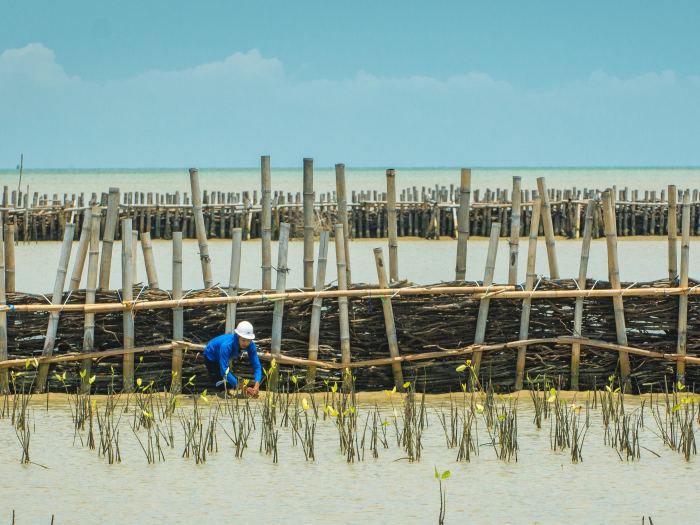
Mangrove restoration in northeast Java, Indonesia
Adaptive measures
So is the answer to these extreme weather events to build more and more protective infrastructure, higher and higher dikes?
Stefan: “Companies like Boskalis can physically build infrastructure to help limit the impact of the problem of course. This is what actually happens in the Netherlands, where many dikes along rivers and estuaries are presently heightened and reinforced as part of the High Water Safety Program. The new norms for dike design (in place since 1 January 2017) cater for many effects, including those related to climate change: extreme river discharges, intensified rainfall events and accelerated sea level rise offshore. The projects involved, like the Markermeer dikes Hoorn-Amsterdam, the Houtrib dike between Lelystad and Enkhuizen and the Prins Hendrik Dike on the island of Texel account for a time scale of 50 years. Given this relatively short time scale and the nature of the project, climate effects can be incorporated in the project scope through a slight increase of the crest elevation.”
“Another way to cater for climate-induced uncertainties is by including adaptive elements in the project design. The reinforcement of the Afsluitdijk (the 32-kilometer-long Enclosure dam in the North of the Netherlands) is a good example. The new design comes with a lifetime of 100 years. The available pumping capacity has been set-up in a way that it can cope with increased rainfall and river discharges.”
The time is there to start thinking in terms of climate resilient scenarios and the associated adaptation measures needed.
“In fact, the Dutch strategy for coastline maintenance has already followed such an adaptive approach since the early nineties. In those days, the decision was taken to maintain the shoreline at its 1990 position, to allow for the sustainable preservation of functions and values in the coastal zone. These include coastal safety, housing, nature, recreation and drinking water supply. It was also decided that coastal nourishments would be the preferred measure to mitigate erosion. Depending on the rate of sea level rise, the annual nourishment volumes can simply be increased or decreased. So in these present-day projects future climate change effects have been incorporated.”
Can this approach be applied across the world?
Stefan: “Things can be different elsewhere in the world compared to the west. In Bangladesh and other countries in the tropics, the subsoil is often extremely muddy which makes it very expensive to develop robust civil-engineering constructions or coastal defenses. Without appropriate soil improvement or bed protection measures, the construction will simply erode. Sadly, this is often seen in practice. In addition, these countries often do not have the financial means nor the governance system in place to develop and maintain truly robust, long-term solutions. The solution is to develop simple, low-cost measures that effectively operate in the long term. This can be achieved by following the principles of Building with Nature. Taking incremental measures that each aim to promote mangrove restoration in these countries will, in the long run, result in a robust mangrove belt that can damp incoming wave energy and grow with the sea level rise. Community engagement programs are necessary to obtain public commitment and support, which ultimately leads to low-cost, sustainable solutions that can be applied along many muddy coastlines in the world.”
“In general, it is important to start thinking ahead and develop climate-resilient solutions for the long-term, as the long-term perspective governs the solutions of tomorrow.”
Climate agreement
What difference has COP21 and recently COP23 made in tackling global warming? Is there a need for a ‘Global Masterplan’?
Gerard: “I believe the COP21 Paris agreement is truly historic. It is impressive to see so many countries signing this very ambitious document. It is a historic decision for mankind to limit global warming to 2 degrees Celsius, and if possible to 1.5 degrees. Moreover, 100 billion euros a year has been committed to develop adaptation and mitigation measures. At COP23 in Bonn last November everyone discussed how to make these ambitions operational so that they are not just targets, and what that means in terms of national commitments.”
I believe the COP21 Paris Agreement is truly historic.
“There was also the launch of The Global Centre of Excellence on Climate Adaptation (GCECA), an initiative which brings together expert knowledge and financing concepts to assist developing countries. This will help manage the large budget made available in the various climate funds and make sure it is well spent.”
“We need to carry the international spirit of the Paris agreement. The Montreal agreement on the ozone layer from 1987 is a good example of a successful international environmental agreement. We decided to stop the emission of CSCs into the atmosphere and this was very successful — satellite images show that the ozone hole that is caused by the CSCs is getting smaller. So, international agreements can be very effective. Moreover, it is most important that private companies and individuals internalize the Paris goals (on the reduction of greenhouse gases) in order to help preserve the planet.”
Stefan: “I am also positive, COP21 has definitely helped make people more aware. They understand that there are grounds to be taking measures. It is now time for the next step and to make it practicable.”
“Countries have to show leadership and develop mitigation and adaptation plans. For example the Netherlands is leading here when it established its national Delta Commission, without a major disaster occurring first — a pro-active approach, which is admired by other countries facing similar problems.”
“And certainly I draw optimism from the younger generation, the sustainability theme is a key part of their life. For them Building with Nature is self-evident. Many engineers are now working on nature-based solutions, not just technical ones but in the broader context. Adaptive solutions are being developed and actionable plans are prepared. These are key elements to any long-term solutions and they are being accelerated by new generations of young engineers.”
“Across the world, we see new forms of collaboration evolve involving local engineering companies, SMEs, contractors, scientists, knowledge institutes, universities, NGOs etc. New collaborations yield new solutions, often with a focus on sustainable climate adaptation. The innovative Marker Wadden project in the Netherlands for instance, would not have happened without the inspirational leadership of the nature preservation organization Natuurmonumenten. Such collaborations offer extremely interesting opportunities for the engineers and ecologists of the future.”
The road ahead
Are there reasons for optimism?
Gerard: “People at least know that climate change is happening and measures are urgent. It is now about how we achieve this goal. A few years ago you still had to convince people.”
“A second development that seems promising is that many leading global multinationals such as Tesla, Google, Facebook and Apple, have a vision about a sustainable future, making their products and offices more sustainable. Even conservative oil companies are now aiming for a sustainable planet and considering taking large steps to realize the Paris goals.”
In an ideal world what are three things you would do right now to help solve this massive challenge?
Gerard: “Number one, introduce tough and comprehensive laws to reduce, and ultimately stop CO2 emissions. If not, by 2200 half the world population is in serious danger facing severe flooding.”
“Two: invest in practical solutions such as early warning systems to at least get people accustomed to these extreme events. At KNMI we ask ourselves how to protect and warn society? We are lobbying for an early warning center in the Netherlands. This is not just to announce that there is a major storm expected, which we are doing right now already. But the information is given earlier — possibly up to two weeks in advance — and made more actionable. Local authorities will be able to take decisions on when to evacuate people, when to start pumping water away or take other measures to alleviate pressure on the dikes. Also we expect to be abko0le to provide customized early warnings tuned to the needs of certain local authorities or even individuals. By combining such early warning ideas with novel engineering concepts, alternative — more affordable — solutions can be developed. We should conduct engineering experiments in this domain to further develop these ideas. We should not be afraid to try.”
Stefan agrees, adding that number three should be forming coalitions of engineering companies, contractors, universities and knowledge institutes. “Essentially we should involve people from different backgrounds and NGOs. This is vital because they have a lot of valuable knowledge about the local situation and specific circumstances.”
“Not everyone is as convinced as us about the sense of urgency. Rather than a theoretical exercise, why not do it in reality? Can we even accommodate this early warning system into a real world setting? The Netherlands should show leadership — as we do with our Delta Commissioner. Why not assign part of the coastline as a living lab for the development of climate-resilient solutions? In this way we could learn about eco-physical responses, as well as the socio-economic acceptability, hence implementability of such solutions. If there is anyone on this planet to have this commitment — as we already live below sea level — it’s us!”
